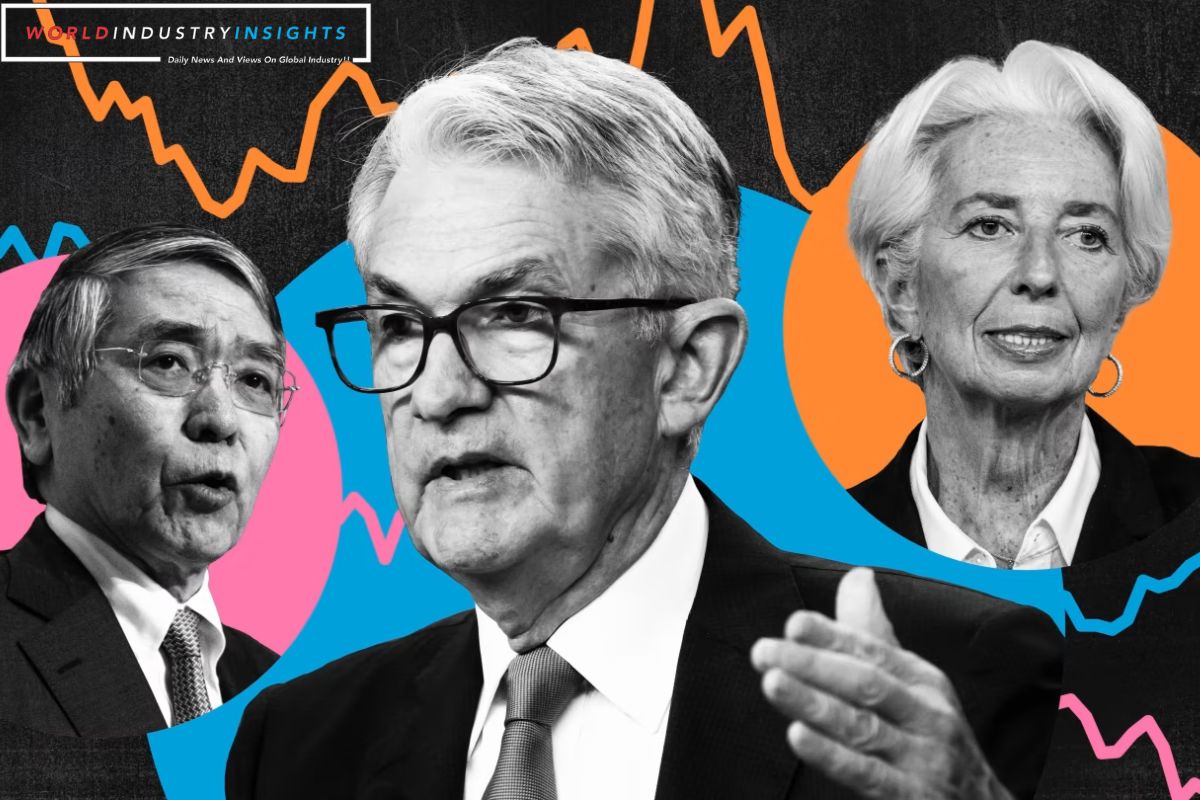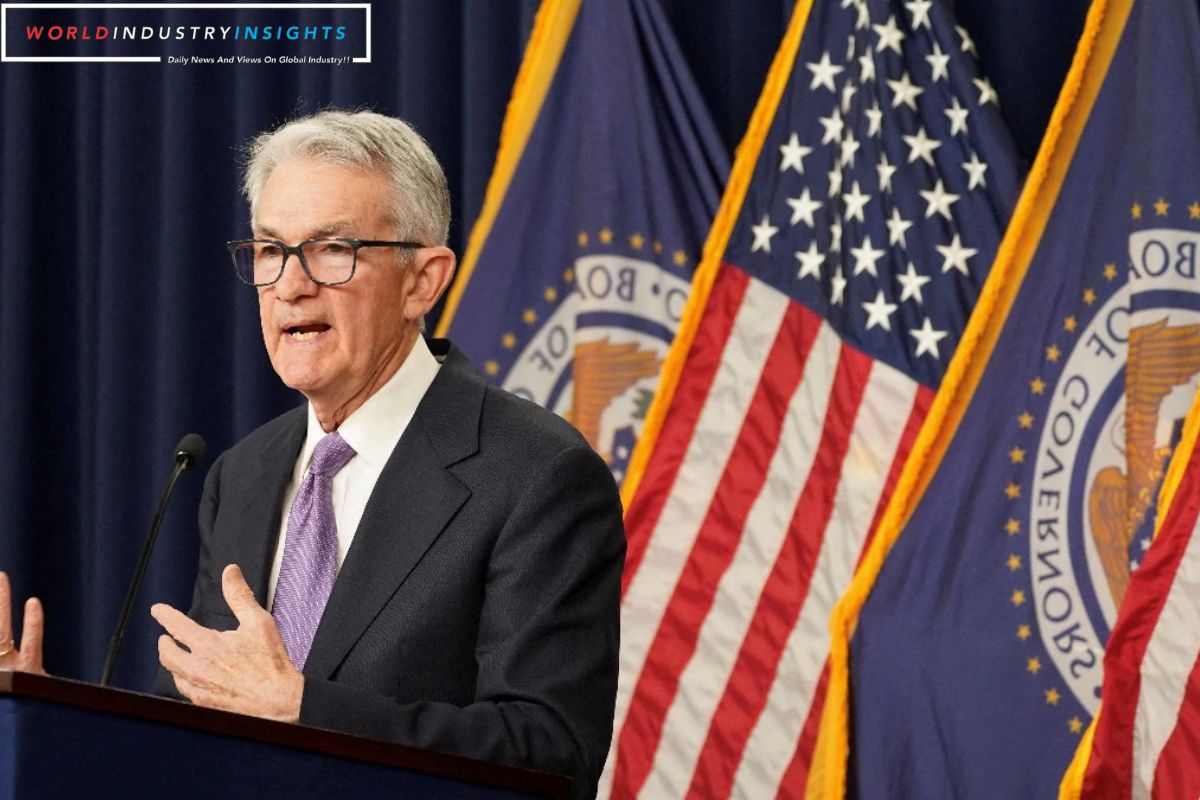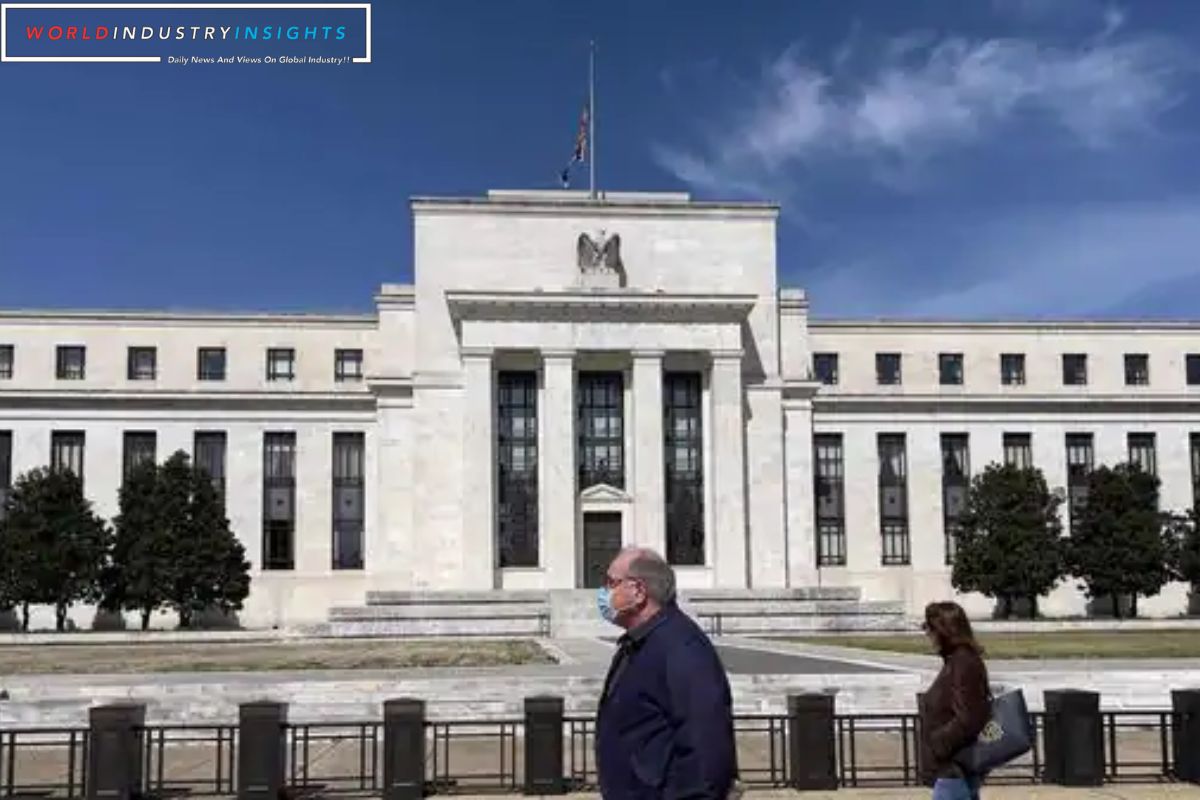Fed’s Balancing Act: The Federal Reserve’s delicate balancing act between addressing lower inflation risks and exercising caution over potentially ‘overly restrictive’ policies has become the subject of intense debate and scrutiny. As the central bank carefully navigates the complex economic landscape, its evolving confidence in inflation control has been evident through shifting language and reduced upside risks.
However, the market reactions and projections in response to the Fed’s actions have raised concerns about the emerging tradeoff between inflation control and employment rates. With uncertainty surrounding future policy decisions, the Fed finds itself in a precarious position, leaving both economists and investors eagerly awaiting their next move.
Key Takeaways
- Federal Reserve policymakers are increasingly focused on controlling inflation and are considering a lower target range for the federal funds rate by the end of 2024.
- The Fed’s language has shifted to reflect a belief that inflation pressures are being tamed, indicating reduced upside risks in the economy.
- Market sentiment expects the Fed to take a more accommodative stance, but caution is needed when interpreting market projections as the Fed emphasizes data dependency and patience in adjusting policy.
- There is a tradeoff between inflation control and employment rates, with some officials concerned that overly restrictive policies may hinder employment. Striking a balance between the two objectives is challenging and requires thoughtful consideration and strategic decision-making.
Federal Reserve’s Evolving Confidence in Inflation Control
The Federal Reserve’s evolving confidence in controlling inflation is a pivotal factor shaping its monetary policy decisions. In recent discussions, policymakers demonstrated a growing belief that inflation is under control, leading to a consensus on the appropriateness of a lower target range for the federal funds rate by the end of 2024.
Also Read: Powell Verbal Balancing Act Amid Rate Cut Speculations
This newfound confidence reflects a shift in the Fed’s approach to monetary policy, indicating a willingness to take a more proactive stance in managing inflationary pressures. However, this evolving confidence also raises concerns.
Some argue that the Fed may become too complacent, potentially overlooking the risks of higher inflation in the future. This cautionary view suggests that while the Fed’s evolving confidence is a positive development, it must be tempered with a prudent approach to avoid potential economic pitfalls.
Shifting Language and Reduced Upside Risks
Given the Federal Reserve‘s recent shift in language, it is evident that policymakers are expressing confidence in their ability to lower inflation and mitigate potential upside risks. This change in tone reflects a newfound belief in the effectiveness of their policies and a willingness to take a more cautious approach.
The Fed’s altered rhetoric sends a clear message to the market: they are committed to maintaining a delicate balance between stimulating economic growth and preventing inflation from spiraling out of control.
As we delve into the nuances of this linguistic shift, three key observations emerge:
- The Fed’s omission of the phrase ‘unacceptably high’ when discussing inflation signals their belief that pricing pressures are gradually being tamed.
- This linguistic adjustment suggests that the Fed sees reduced upside risks in the economy, indicating their confidence in the ongoing recovery.
- The change in language also highlights the central bank’s cautious stance, as they aim to avoid overly restrictive policies that could impede economic progress.
Market Reactions and Projections
Market reactions and projections following the release of the minutes indicate that traders in interest rate futures maintain bets on the Federal Open Market Committee initiating rate cuts in March. This suggests that there is a prevailing sentiment among market participants that the Fed will take a more accommodative stance in response to the current economic conditions.
However, it is important to approach these projections with caution, as the Fed has been signaling a wait-and-see approach and has emphasized the need to be patient in adjusting monetary policy. While the market may be pricing in rate cuts, it is crucial to consider the broader economic context and the Fed’s commitment to data dependency.
It remains to be seen whether the Fed will follow the market’s expectations or maintain a more cautious approach.
Emerging Tradeoff Between Inflation Control and Employment Rates
An intriguing dilemma has emerged among a few Fed officials, as they grapple with the delicate balance between controlling inflation and sustaining high rates of employment. This tradeoff presents a complex situation that requires careful consideration and nuanced decision-making.
Here are three key aspects to understand:
- Inflation Control: The Fed’s primary objective has traditionally been to keep inflation in check. This involves implementing policies aimed at preventing prices from rising too rapidly and eroding the purchasing power of consumers.
- Employment Rates: On the other hand, maintaining high rates of employment is crucial for a healthy economy. It ensures that individuals have the means to support themselves and contributes to overall economic growth.
- The Tradeoff: The emerging dilemma lies in the fact that some Fed officials believe that overly restrictive policies aimed at controlling inflation may hinder employment rates. This poses a challenge as striking the right balance between the two objectives becomes increasingly difficult.
This tradeoff between inflation control and employment rates is a contentious issue that requires thoughtful consideration and strategic decision-making. The Fed must navigate this tightrope to ensure both stability in prices and sustained employment for the benefit of the broader economy.
Uncertainty Surrounding Future Policy Decisions
The uncertainty surrounding future policy decisions at the Federal Reserve is creating a challenging environment for policymakers as they navigate the delicate balance between economic safeguarding and the need to address decreasing inflation.
This uncertainty stems from a variety of factors, including the unpredictable nature of the ongoing debate about the tradeoff between inflation control and employment rates. The minutes of the recent Fed meeting highlighted the cautious and data-dependent approach that policymakers are taking, reflecting the elevated uncertainty surrounding the economic outlook.
This uncertainty has left policymakers grappling with the question of how to proceed, as they strive to make decisions that will support economic growth while also managing inflationary pressures. The consensus among participants is that careful, data-dependent decisions are necessary in order to navigate this uncertain landscape.
It is clear that the future policy decisions of the Federal Reserve will require a careful and nuanced approach that takes into account the unpredictable nature of the current economic environment.
Conclusion Of Fed’s Balancing Act
The Federal Reserve’s cautious approach to inflation control while also considering employment rates has sparked debate over the effectiveness and potential risks of their policies.
As market reactions and projections continue to influence their decisions, the uncertainty surrounding future policy choices remains.
It is essential for the Fed to strike a balance between lower inflation risks and avoiding overly restrictive measures to ensure a stable and prosperous economy.
Our Reader’s Queries
What does the balancing act refer to in economics?
The Balancing Act aims to eliminate the random cuts caused by the sequester and achieve a more balanced approach to reducing our long-term deficit. This bill seeks to create a fair distribution of budget cuts and revenue by closing loopholes that benefit the wealthiest individuals and corporations in America. By doing so, we can ensure that everyone contributes their fair share towards achieving a more sustainable financial future.
What is meant by the Fed’s dual mandate?
The Federal Reserve has a two-fold mission: to attain full employment and maintain price stability. This is accomplished by regulating the money supply and adjusting interest rates as needed to counteract economic slowdowns or excessive growth. While it may seem like a tall order, the dual mandate is theoretically achievable.
What are the Fed’s three main tools for conducting monetary policy?
The FOMC, or Federal Open Market Committee, wields significant power over monetary policy through three key tools: open market operations, the discount rate, and reserve requirements. These tools allow the Federal Reserve to influence the economy and maintain stability. By controlling the supply of money and credit, the FOMC can help regulate inflation, employment, and economic growth. Understanding the role of the FOMC is crucial for anyone interested in the workings of the US economy.
Is the Federal Reserve necessary?
Congressional oversight of the Federal Reserve and monetary policy is crucial due to several reasons. Firstly, monetary policy can take precedence over fiscal policy in specific situations. Secondly, inflation is primarily determined by monetary policy. Lastly, the Federal Reserve has a significant impact on interest rates. Therefore, it is essential for Congress to monitor and regulate the Federal Reserve’s actions to ensure the stability and effectiveness of the country’s monetary policy.




